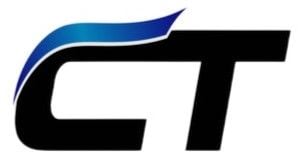Percolation Tests
Percolation Tests for Soakaway Design
Why do a Percolation Test?
A soil percolation test is required to be carried out on the land where the septic tank system or sewage treatment plant soakaway drainage field is intended to be built. It is a test that determines the rate in which soil absorbs a known volume of water. This is to make sure that the land (soil) is suitable for a soakaway drainage field, and to make sure that the drainage field is designed properly.
A percolation test is ALWAYS required for septic tanks.
How do you carry out a percolation test?
The percolation test method is described in 1.33 to 1.38 Part H2 of the Building Regulations 2000: Drainage and waste disposal (Go to page 33). A simplified method is set out below, but for the full method, please click on the link above.
A percolation test should not be carried out during abnormal weather conditions and if done in Summer, then the times should be increased by 30% to 50%, depending on the recent weather.
The percolation test method
- Excavate a hole 300mm square and 300mm below the proposed outlet from the septic tank or sewage treatment plant.
- Dig the test hole vertically to the proper depth. Remove all loose debris.
- Fill the test hole with water to a depth of at least 300mm. Allow to seep away overnight.
- Next day, refill the test section with water to a depth at least 300mm. Observe the time, in seconds, for the water to seep away from 75% full to 25% full.
- Divide this time by 150mm.
- The answer gives average time in seconds (Vp) required for the water to drop 1mm.
- Carry out the test at least 3 times, with at least 2 trial holes.
- The average figure from the tests is taken.
The average value of Vp must be between 15 and 100 and the preliminary site assessment report and hole tests favourable to use drainage field disposal.
The minimum value ensures untreated effluent cannot percolate too rapidly into groundwater before tertiary soil treatment has taken place. Where Vp is outside these limits, effective treatment is unlikely to occur. However, where there is an alternative form of tertiary treatment to treat the effluent, it may still be discharged into a soakaway.
IMPORTANT Some Councils insist that Percolation Tests are carried out by 'qualified persons' and do not accept your own test results. You may be required to contact a contractor to carry out the percolation test. Please check with your Local Authority.
A percolation Test fails if the results are under 15 or over 100 seconds/mm. drop.
The Soakaway Design
1.27 Part H2 of the Building Regulations 2000: Drainage and waste disposal (go to page 32) states that
A drainage field or mound serving a wastewater treatment plant or septic tank should be located:
- at least 10m from a watercourse or permeable drain.
- at least 50 m from the point of abstraction of any groundwater supply
- Not in any Zone 1 groundwater protection zone.
- at least 15m from any building.
- sufficiently far from any other drainage fields, drainage mound soakaways or soakaways so that the overall soakage capacity of the ground is not exceeded.
- At least 1.2 metres above the highest winter water table level.
| Tank Capacity | 2800 | 3800 | 4600 | 6000 | 7500 | 9000 | |||||
| No. of Persons | 4 | 9 | 14 | 22 | 26 | 39 | |||||
| Rate of Fall, Vp (sec/mm) | Required length of irrigation drain, in metres | ||||||||||
| 0-5 FAIL | |||||||||||
| 6-15 FAIL | |||||||||||
| 15-20 | 34 | 75 | 117 | 183 | 217 | 325 | |||||
| 21-24 | 40 | 90 | 140 | 220 | 260 | 390 | |||||
| 25-30 | 50 | 113 | 175 | 275 | 325 | 487 | |||||
Where the calculated result indicates the need for a drainage trench longer than 200 metres, serious consideration should be given to the use of a more economic alternative sewage treatment system. A sewage treatment plant will produce a better quality of effluent which, with permission, is fed into a water course or open culvert. Please contact us for further details.
